When it comes to high-end steak cuts, two names stand out: beef tenderloin and filet mignon. While the terms are often used interchangeably, they are not the same. Beef tenderloin is a large cut of meat that includes the filet mignon, among other muscles. On the other hand, filet mignon specifically refers to the small, tender medallion-shaped cut that comes from the tip of the tenderloin. Both of these cuts are renowned for their tenderness and buttery texture, but they have some key differences. So, if you’re a steak lover looking to indulge in the best cut, read on to discover the difference between beef tenderloin and filet mignon.
What is Beef Tenderloin?
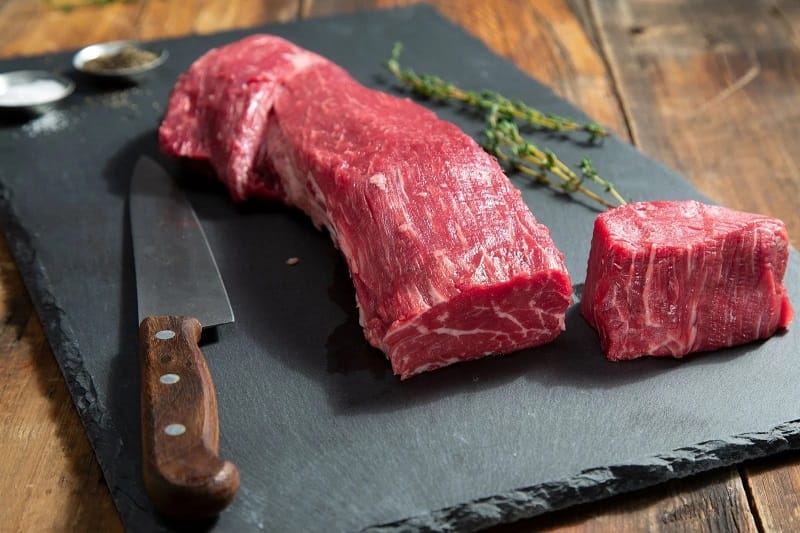
Beef tenderloin, also referred to as filet mignon, is a cut of beef taken from the smaller end of the tenderloin. It is the most tender cut of steak, with a delicate, buttery texture and a mild yet rich flavor. It is cut from the loin, a muscle along the cow’s backbone. The tenderloin is made up of two parts, the main tenderloin and the chain, which is a thin strip of connective tissue.
Beef tenderloin is best cooked quickly over high heat to develop a nice brown crust on the outside. This helps seal the flavor and keeps the tenderloin juicy and tender. It can be grilled, pan-seared, broiled, or even roasted. It is also great for roasting whole and carving into medallions for a fancy dinner party.
Beef tenderloin is best served medium rare and sliced thinly. This gives it a nice, evenly cooked texture and allows for maximum flavor. It pairs well with red and white wines and with various sides, from potatoes and vegetables to mushrooms and onions.
Beef tenderloin is a luxurious cut of beef that is perfect for special occasions and makes an elegant presentation. Whether hosting a dinner party or just looking to treat yourself to a delicious meal, you can’t go wrong with beef tenderloin.
What is Filet Mignon?
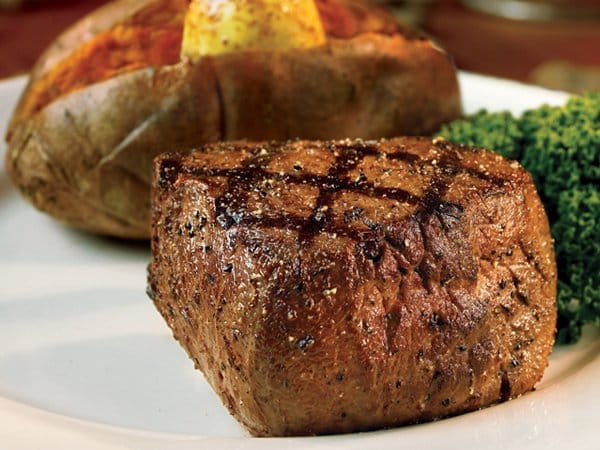
Filet mignon, or tournedos, is a type of steak cut from the tenderloin of beef. It is widely considered the most tender and flavorful cut of steak and is highly sought after by steak enthusiasts.
Filet mignon is a classic French dish that translates to “dainty fillet” or “dainty slice.” The filet mignon is cut from the small end of the beef tenderloin, a long, narrow muscle that runs along the spine of a cow. It is the most tender beef cut and is expensive due to its scarcity and lack of fat. The meat is usually cut into individual medallions or small rounds, which can then be seared, grilled, or pan-fried.
Filet mignon is often served with a rich buttery sauce, such as béarnaise or brandy cream sauce. It is often served with vegetables, such as grilled asparagus or a potato side dish. The filet mignon is often served rare or medium-rare, which allows for the maximum flavor and tenderness to be preserved.
This tender cut of steak is a favorite among steak lovers, but it is also an excellent choice for a special occasion or to impress guests. Filet mignon is an impressive and flavorful steak cut that will surely please everyone at the table.
Beef Tenderloin And Filet Mignon: What’re The Similarities
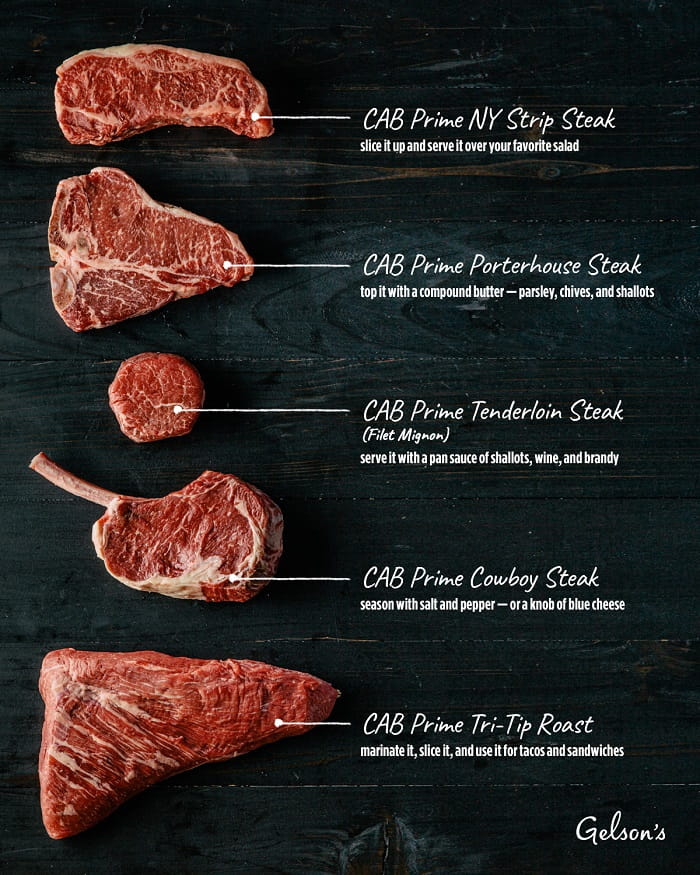
When it comes to beef, there are few cuts of meat more luxurious than beef tenderloin and filet mignon. Both cuts of beef are prized for their tenderness, rich flavor, and low-fat content, making them popular choices for special occasions.
Beef tenderloin and filet mignon are both cuts of beef taken from the same region, the loin. This area is characterized by its rich, tender meat known for its flavor and low-fat content.
To similarities, beef tenderloin, and filet mignon are prized for their tenderness, flavor, and low-fat content. Both cuts of meat are usually served as steaks, either grilled or pan-seared, although beef tenderloin can also be roasted whole. Both cuts of meat are also commonly used in sauces, stews, and other slow-cooked dishes.
Beef Tenderloin vs Filet Mignon: The Main Differences
Beef Tenderloin and Filet Mignon are two popular cuts of beef that are often confused with each other. While they are related, there are some key differences between the two. Beef Tenderloin is a larger cut of beef that includes the Filet Mignon, cut from the tip of the tenderloin. While the two are often sold together, they are not the same.
The primary difference is that the Tenderloin is a long portion of the beef running along the spine side, while the Filet Mignon is a specific section of the Tenderloin. The texture and tenderness of both are very similar, but the Filet Mignon is smaller in size and shape than the Tenderloin.
We’ll explore the main differences between beef tenderloin and filet mignon so you can make a more informed decision when choosing the best cut for your next meal.
Location
The first major difference between the two cuts of beef is location. Beef tenderloin is located along the back of the cow, while filet mignon is located along the ribcage. Because of their location, the tenderloin is typically more tender than the filet mignon. The filet mignon is usually tougher due to its location, as it is located close to the bone.
Which Cut Is More Tender?
When it comes to tenderness, the beef tenderloin is the clear winner. Due to its location along the back of the cow, the tenderloin has a less fibrous texture and is more tender than the filet mignon.
Beef Tenderloin vs Filet Mignon: Texture And Flavor
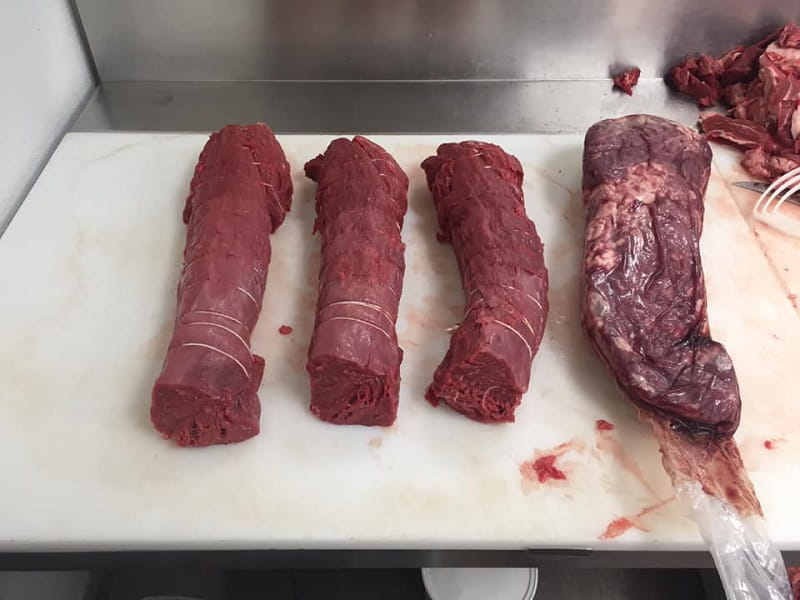
When it comes to texture and flavor, beef tenderloin and filet mignon have distinct differences. The tenderloin has a more buttery flavor and a much more tender texture than the filet mignon. On the other hand, the filet mignon has a more robust flavor and a much firmer texture.
Taste
When it comes to taste, the filet mignon is the clear winner. This cut of beef has a bolder and more intense flavor than the tenderloin. The tenderloin is much milder in flavor and has a softer texture.
Calories
When it comes to calories, beef tenderloin is the healthier choice. A 3-ounce beef tenderloin has about 150 calories, while a 3-ounce serving of filet mignon has about 220 calories. This means that if you’re trying to watch your calorie intake, beef tenderloin is a better option.
Fat Content
In terms of fat content, both beef tenderloin and filet mignon are similar. Each contains about 4 grams of fat per 3-ounce serving. However, beef tenderloin has a slightly higher saturated fat content than filet mignon.
How Do You Prepare Beef Tenderloin And Filet Mignon Differently?
Beef tenderloin and filet mignon are both best cooked with dry heat. This means they should be cooked over direct heat, such as in a pan or grill. Filet mignon is more delicate than beef tenderloin and should be cooked to medium-rare or rare. On the other hand, beef tenderloin can be cooked to a higher temperature and is best when cooked to medium or medium well.
Cooking Method
When it comes to the cooking method, beef tenderloin and filet mignon can both be cooked in a variety of ways. Beef tenderloin is often grilled, roasted, or pan-seared and served with a variety of sauces. Filet mignon is grilled or pan-seared and served with a béarnaise or other creamy sauce.
Filet Mignon vs Beef Tenderloin: Cooking Time
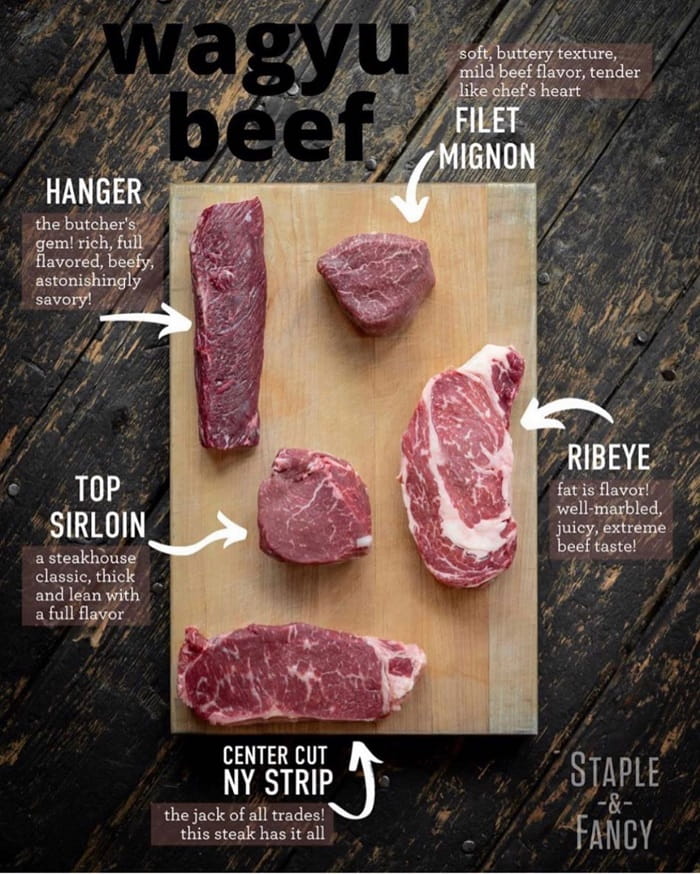
When it comes to cooking time, beef tenderloin is the quicker option. It is a very tender cut of beef with a shorter cooking time than a filet mignon. A beef tenderloin should be cooked to an internal temperature of 145°F (62°C) for medium-rare and 160°F (71°C) for medium. On the other hand, a filet mignon should be cooked to an internal temperature of 130°F (54°C) for medium-rare and 140°F (60°C) for medium.
Which Cut Of Meat Is More Expensive: Filet Mignon Or Sirloin?
In terms of price, the filet mignon is the more expensive cut of meat. It is considered a more premium cut because of its flavor and tenderness. As a result, it is often served in more upscale restaurants. On the other hand, Sirloin is a cheaper beef cut that is more widely available at most supermarkets and butcher shops.
Serving Size
When it comes to serving size, a filet mignon is usually larger than a beef tenderloin. A filet typically weighs between 3 and 4 ounces (85 and 113 grams), while a beef tenderloin usually weighs around 2 to 3 ounces (56 to 85 grams). Depending on the size of the person eating, it may be necessary to adjust the servings accordingly.
Which Cut Of Beef Is Better For Grilling, Beef Tenderloin Or Filet Mignon?
The beef tenderloin is the better option. This cut of beef is more tender and flavorful than a filet mignon, making it better suited for grilling. It is important to note that beef tenderloin should be cooked over medium-high heat for about 8 minutes per side for medium-rare or 10 minutes per side for medium. On the other hand, a filet mignon should be cooked over medium-high heat for about 2 minutes per side for medium-rare or 4 minutes per side for medium.
Read more:
Tips For Selecting High-Quality Filet Mignon And Tenderloin From The Meat Counter?
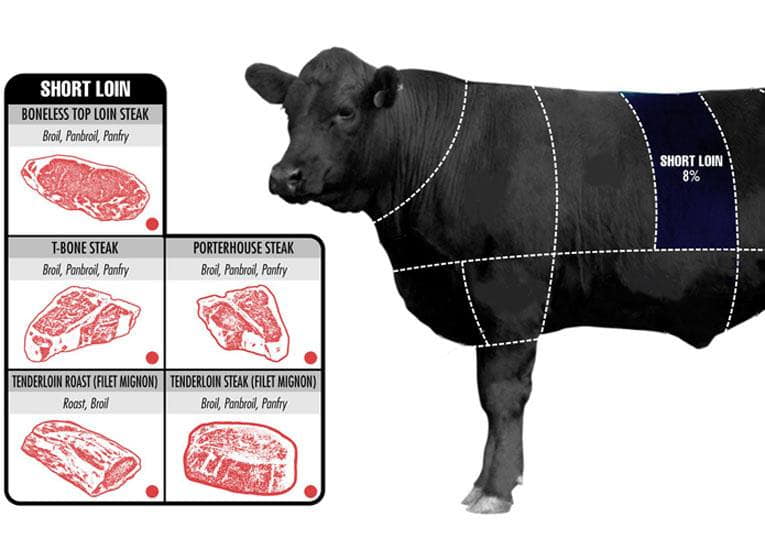
- First, it’s important to look for the right color. The color should be a uniform greyish-red. If the color is too pale, the meat is likely, not fresh. If it’s too dark, the meat may be overly marbled or have too much fat.
- The fat content of the meat is also important. Look for cuts of meat that have a consistent fat content and are not overly marbled. This will ensure that the meat is flavorful and juicy when cooked.
- The texture of the meat is also important. Filet mignon and tenderloin should have a tender, velvety texture. It should not be overly tough or chewy.
- Next, it’s important to pay attention to the smell of the meat. The smell should be pleasant, not overly pungent or gamey. If the meat smells too strong, it’s likely not fresh or of the highest quality.
- Finally, make sure that you’re buying the steak from a reputable butcher. Not all butchers are created equal, so take the time to find one well-known for selling high-quality cuts of meat. You’ll be glad you did when it comes time to cook your steak.
With these tips in mind, you’ll be ready to select the perfect cut of filet mignon and tenderloin from the meat counter. Just keep an eye out for color, texture, and fat distribution, and you’ll be sure to get the best steak possible.
How to Cook Filet Mignon?
Filet mignon is one of the most luxurious cuts of beef, and when cooked correctly, it can make a truly amazing meal. Learning to cook filet mignon is a perfect way to impress someone special or treat yourself.
The key to cooking filet mignon is to get the sear on the outside just right and finish it in the oven. Here’s how to do it:
- Preheat your oven to 400°F. Heat a large skillet over medium-high heat, and add a little oil. Season the steak with salt and pepper on both sides. When the oil is just about to smoke, add the steak. Cook until very seared, about 5 minutes, then flip and add butter and rosemary. Baste with the butter and cook for another 3 to 5 minutes.
- Transfer the skillet to the oven and cook until the steak is cooked to your liking, about 5 minutes for medium. Pro tip: Check the temperature of your meat before transferring it to the oven to see how far you are from the desired temperature. If you are within 10 degrees, you may need even less time. If your steak isn’t done after 5 minutes, check every couple of minutes so you don’t risk overcooking.
- Remove the steak from the pan and rest for 5 minutes before slicing.
How to Cook Tenderloin?
Cooking tenderloin may seem intimidating, but with these simple steps, you can create a mouthwatering dish that will swoon your dinner guests.
- The first step to cooking a delicious tenderloin is to grab the right cut. You want to look for 4 to 5 lbs. of beef tenderloin, trimmed and tied into two pieces. Once you have your beef, season it with salt and pepper. You can either do this ahead of time or right before cooking.
- Preheat your oven to 425 degrees F when ready to cook, and heat a large cast-iron skillet over medium-high heat. Pour some oil into the skillet and then sear the beef on all sides until it develops a nice golden-brown crust. This should take about 3 to 5 minutes per side.
- Once the beef is seared, it’s time to add flavor. Take 4 tablespoons of softened butter, 2 teaspoons of minced garlic, 1 teaspoon of prepared horseradish or Dijon mustard, and 1 teaspoon of minced rosemary or thyme and mix them together. Slather the beef with this butter mixture, then insert a probe thermometer into the thickest part of the tenderloin and roast it in the oven until it reaches an internal temperature of 135 degrees F. Depending on the size of the tenderloin, this should take about 20 to 25 minutes.
- Once the temperature of the tenderloin is reached, take it out of the oven and let it rest for 10 minutes before serving. This will help the juices reabsorb into the meat, resulting in a juicy and tender piece of beef. Slice the tenderloin into thick pieces and serve it with your favorite sides and sauces. Enjoy!
FAQs About Beef Tenderloin vs Filet Mignon
Can You Substitute Beef Tenderloin For Filet Mignon In A Recipe?
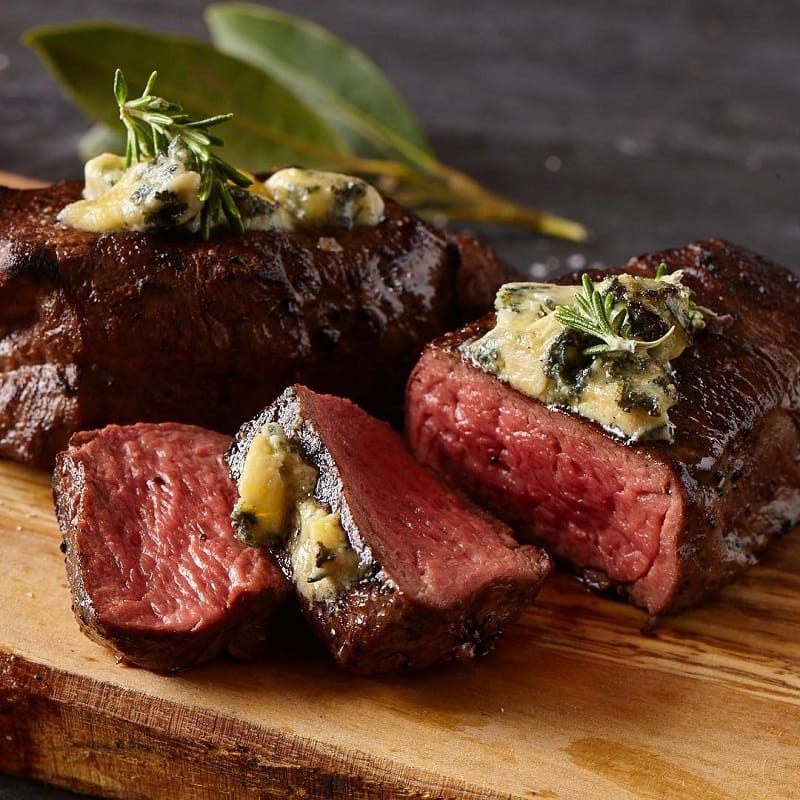
Beef tenderloin can indeed be substituted for filet mignon. These two cuts of meat come from the same area of the animal and are similar in texture, tenderness, and flavor. In fact, ribeye steak is also a good substitute since it contains a section of tenderloin. Other alternatives include pork tenderloin, sirloin butt roast, strip loin roast, top blade roast, and even round steak. It’s worth noting that each cut will have unique qualities, so it’s essential to consider the recipe’s demands when selecting a replacement.
Should I Trim The Fat Off Of Beef Tenderloin And Filet Mignon Before Cooking?
According to factual data, trimming the whole tenderloin is recommended by removing the excess fat and narrow ends. However, one should not discard the chain, as it is still good meat and can be used in a soup or stew. It is also important to remove all excess fat, sinew, and connective tissue from the outside of the tenderloin before cooking to ensure tenderness.
Conclusion
In conclusion, beef tenderloin and filet mignon are both very popular cuts of beef that are commonly enjoyed. While they are both tender and delicious, the two cuts of meat have some major differences. Beef tenderloin is a larger cut of beef often cooked whole, while filet mignon is a smaller, more tender cut of beef usually cut into individual steaks. Beef tenderloin is more economical and has a more robust flavor, while filet mignon is more expensive and has a milder flavor. Ultimately, the choice between beef tenderloin vs filet mignon depends on personal preference and budget. No matter which cut of beef you choose, both are sure to be delicious.
References:
- https://www.ehow.com/info_8144442_substitutes-beef-tenderloin.html
- https://www.myrecipes.com/how-to/trim-beef-tenderloin

Hey readers! Chip Holland here, and I’m a Manager of this website. My passion for writing about it only matches my passion for BBQ. Follow my blog for mouth-watering recipes, tips, and tricks for the perfect smoke, grill, and BBQ. I’m sure you won’t be disappointed!
